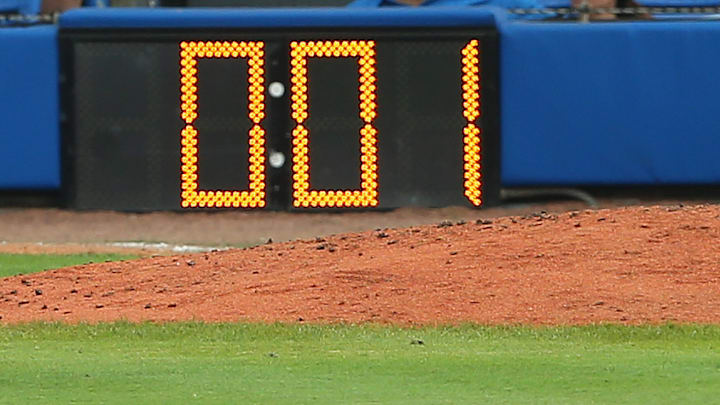Big Bases, no shifts, and a PITCH CLOCK!
That is all the new rule changes and implemented procedures that the MLB will have for the upcoming season, and while some teams may have more players that will need some time to get acclimated to the new rules, a team like the Rays may feature more players that are already ahead of the curve.
The Rays are a team that features younger talent, and with the pitch clock rule being implemented in 2015 in some parts of the minor leagues, most of the Rays' talent has played with a pitch clock in effect at some point in their pro career.
Actually, 36 of the 40 players on the 40-man roster have played under the pitch clock at some point during their careers, a stage-setting statistic and something that Rays fans should feel promising about.
With most of the Rays roster having played under the pitch clock in the minors, the roster should mostly have a general understanding of the process, which is that "pitchers will be required to begin their motion 15 seconds after receiving the ball with the bases empty or 20 seconds after receiving the ball with runners on base. If they don’t, they will be charged with an automatic ball. Batters, meanwhile, must be in the batter’s box and alert to the pitcher by the 8-second mark on the clock, or else be charged with an automatic strike," according to an article written by Anthony Castrovince on MLB.com.
The one key, however, that players who have experience under the pitch clock will have to get used to is the now reduced time frame. There is a 14-second pitch clock with no runners and an 18-second pitch clock with runners in the minors, so players will have to adjust to a longer pitch clock, though it will not be a drastic change.
This extended pitch clock for the major leagues, which it is unclear whether the minor leagues will adopt the same timing, may favor a team with experience, such as the Rays, as the extra time may give them more leeway, if you will, and with teams practicing with it during spring training, players will have even more opportunities to test out the timing for themselves when hitting and pitching.
Beyond the pitch clock rule being implemented, bigger bases and shifts will also be in effect.
And, while larger bases should increase the number of stolen base attempts and add some offensive aggressiveness on the basepaths and strategy, the loss of the shift could actually hurt a team like the Rays.
Knowing Kevin Cash and the staff with the Rays, this group is known for the use of analytics to exceed their chances of winning games, which is one reason why the Rays sometimes don't go after the top free agents.
The team relies on a roster that plays well in their system while also coming at a discounted premium.
Losing the shifts takes away some of that from the Rays and their aggressiveness in trying new changes, both offensively and defensively, which could be a negative for the team, but you can only assume that it could have an effect until we see games played this spring.
While these rules have their pros and cons, the Rays are a team that should benefit from the changes.
Being a transcendent organization in the game of baseball, a team like the Rays should be able to find ways to use these changes to their advantage, and with their usage of "analytics," the Rays will surely be aggressively finding ways to work the new rules into their favor.
